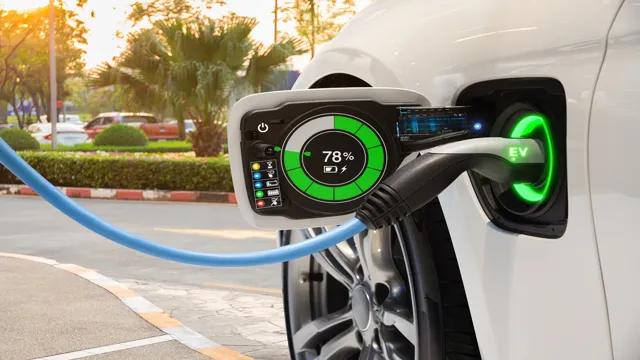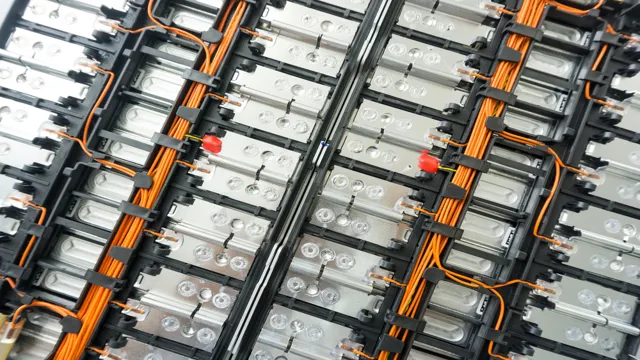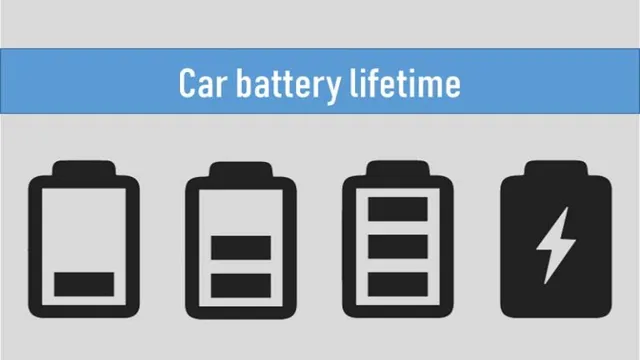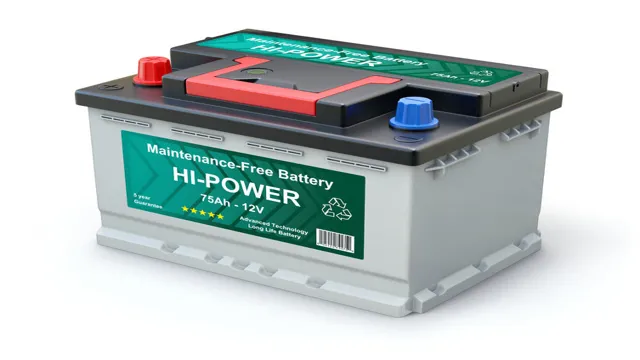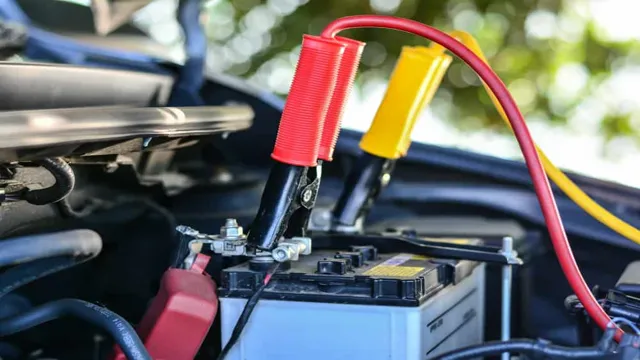Revolutionary Innovation: Electric Cars that Charge While You Drive
Electric cars are becoming increasingly popular, with more and more people opting to make the switch to a more sustainable mode of transportation. However, one of the main concerns for electric car owners is the limited range of the vehicle. This is where the idea of the electric car charging its battery while driving comes in.
The idea of charging an electric car while driving might seem futuristic, but it’s already a reality. It’s called “dynamic wireless charging” or “roadway-powered electric vehicle technology,” and it’s been in development for several years. The concept involves embedding an electrified coil in the road, which can transfer power wirelessly to the electric car’s battery via a receiver coil underneath the car.
The benefits of this technology are numerous. Not only would it greatly increase the range of electric cars, but it would also reduce the need for frequent stops at charging stations, making long road trips more convenient. Additionally, it would eliminate the need for electric car owners to worry about finding a place to charge their car, as the roadway itself would provide the power needed.
Despite the potential benefits, there are still some challenges to overcome before this technology becomes mainstream. For example, the cost of implementing the infrastructure required for dynamic wireless charging is still high, and it would require significant investment from governments and private companies. Additionally, the technology would need to be standardized so that all electric cars can use it, regardless of the manufacturer.
All in all, the concept of electric cars charging their batteries while driving is an exciting development in the realm of sustainable transportation. While it may not become widespread in the immediate future, it’s worth keeping an eye on as the technology continues to develop and evolve. Who knows, in the not-too-distant future, we may be driving on roads that not only take us where we need to go but also power our vehicles.
The Technology Behind Regenerative Braking
If you’re familiar with electric vehicles, you’ve probably heard of regenerative braking, which is the innovative technology that allows electric cars to charge their batteries while driving. Simply put, regenerative braking works by recovering kinetic energy that’s typically lost when a car slows down or comes to a stop. When a driver applies the brakes or decelerates, the car’s electric motor runs in reverse, converting its kinetic energy into electrical energy that can be stored in the battery.
This allows electric cars to extend their range and reduces the need for frequent recharging. Additionally, it helps car owners save money on electricity bills and has positive environmental impacts since regenerative braking reduces the amount of energy that needs to be generated by power plants. All in all, regenerative braking is just one of many impressive feats of engineering that make electric cars an exciting, sustainable transportation option for today’s world.
Converting Kinetic Energy to Electrical Energy
Regenerative braking is an advanced technology that helps to convert the kinetic energy that is produced when we brake a vehicle into electrical energy. This technology has been implemented in electric vehicles and hybrid vehicles, where kinetic energy collected from braking is stored in batteries or capacitors, and can then be reused to power the same vehicle or other electronic devices. By implementing regenerative braking, it is estimated that electric vehicles can increase their overall energy efficiency by up to 30%.
An electric vehicle, unlike a traditional combustion engine vehicle, uses an electric motor to power the car. This motor runs on electricity stored in batteries that are charged by plugging in the vehicle to a charging station. When the brakes are applied in an electric vehicle, regenerative braking comes into action.
Essentially, the electric motor runs in reverse, creating resistance against the wheels that slows down the vehicle. This, in turn, generates electrical energy that is sent back to the battery, recharging it and ultimately staying in the system for future use. Regenerative braking technology helps make electric and hybrid vehicles more efficient and eco-friendly.
It allows for the recycling of energy that is usually lost during the braking process, making it possible to reuse it and lower the overall energy consumption of the vehicle. Furthermore, regenerative braking is a key feature that provides the impressive performance of electric cars by improving their acceleration, range, and battery life. All in all, regenerative braking is an innovative and practical solution for fuel-efficient transportation and sustainable energy consumption that has the potential to reduce our reliance on oil and lower our carbon footprint.
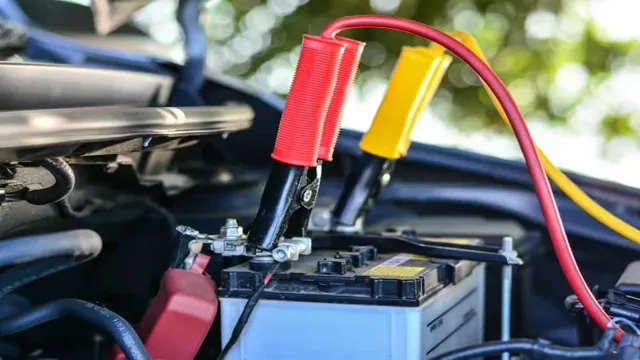
How Regenerative Braking Works
Regenerative braking is an advanced technology that is revolutionizing the automobile industry. It is an energy-saving technique that is ideal for hybrid and fully electric cars. The principle behind regenerative braking is quite simple.
When you apply the brakes, instead of wasting the kinetic energy produced by the car, it is converted into electrical energy that can be stored in a battery. The energy converted is then used to power the car or recharge the battery. When you step on the brake pedal, the motor acts in reverse, and the car essentially generates electricity.
It is an efficient process that saves energy and reduces fuel consumption. The benefits of regenerative braking are numerous, including reduced emissions, lower operating costs, and increased battery life. So, if you are in the market for an electric or hybrid car, be sure to consider one that has regenerative braking technology.
Increased Range and Efficiency
Electric cars have always been an excellent alternative to traditional gas-guzzlers, but one of the main drawbacks has been their limited range. However, with advancements in technology, automakers are coming up with innovative ways to increase the range and efficiency of electric cars. One such solution is that electric cars can charge their batteries while driving.
This process is known as regenerative braking, where energy that is normally lost during braking is captured and stored in the car’s battery. This process not only increases the car’s range but also improves its efficiency. Moreover, using this method to charge the battery is much more environmentally friendly compared to charging the battery using electricity from the grid, as it requires less energy and reduces the car’s carbon footprint.
All in all, this exciting innovation in electric car technology could revolutionize the automotive industry as we know it.
How Regenerative Braking Improves EV Range
Regenerative braking is a powerful tool that helps improve the range and efficiency of electric vehicles (EVs). It works by capturing the kinetic energy that is normally lost during braking and converting it into electrical energy, which can be stored in the EV’s battery. This means that less energy is wasted, and more energy is available to power the vehicle.
In fact, regenerative braking can increase the range of an EV by up to 20%. Not only does this reduce the need for frequent charging, but it also makes EVs more accessible and appealing to a wider audience. So, the next time you hit the brakes in an EV, you’ll be contributing to a greener and more efficient future.
Reducing the Need to Stop for Charging
Reducing the need to stop for charging is a top priority for electric vehicle owners. Fortunately, modern electric cars and hybrids offer increased range and efficiency to help achieve this goal. With technology advancing at an exponential rate, the average range of fully electric vehicles is now over 200 miles.
Additionally, many electric cars use regenerative braking which helps convert energy lost during braking back into useable energy for the vehicle, further maximizing efficiency. Charging times are also becoming faster, with some newer EVs taking as little as 30 minutes to charge to 80% battery capacity. As the technology behind electric vehicles continues to evolve, we can expect to see even greater range and efficiency in the future, making stopping for a charge a thing of the past.
Saving Money on Energy Costs
If you’re looking for ways to reduce your energy costs, one effective method is to maximize the range and efficiency of your appliances. Upgrading to energy-efficient models, such as refrigerators and stoves with Energy Star ratings, can save you money in the long run by reducing your monthly utility bills. Additionally, regularly maintaining and cleaning your appliances can lead to better performance and lower energy consumption.
Another easy way to increase efficiency is to adjust the temperature of your refrigerator and freezer to the optimal levels. By taking these simple steps, you can significantly decrease your household’s energy usage and ultimately reduce your overall expenses.
Real-World Examples
Have you ever wondered if an electric car can charge its battery while driving? Well, the answer is yes! There are currently two ways to achieve this: through regenerative braking and through solar panels on the car’s body. Regenerative braking involves using the car’s motor as a generator to convert kinetic energy back into electricity and store it in the battery. This process occurs every time the driver takes their foot off the accelerator or brakes.
Some newer electric cars also have solar panels integrated into their exterior body, allowing them to capture energy from the sun while driving and charging the battery at the same time. While the amount of energy captured through solar panels is relatively small, it can help extend the car’s driving range. As technology continues to advance, it is possible that we will see more innovative ways for electric cars to charge their batteries while on the move.
EV Models with Regenerative Braking
Electric vehicles (EVs) are becoming more popular due to their eco-friendliness and energy efficiency. One of the many features that make EVs unique is their regenerative braking system. This technology allows the car to convert the energy that is lost during braking into electrical energy, which is then stored in the battery for later use.
Some of the popular EV models that come equipped with regenerative braking include the Tesla Model S, the Nissan Leaf, the BMW i3, and the Chevy Volt. These cars offer a smoother, more efficient ride while also reducing the driver’s carbon footprint. Essentially, regenerative braking allows EVs to recapture energy that would normally be lost during braking, making them one of the most energy-efficient vehicles on the market.
Not to mention, less energy loss also means longer lasting brakes. Overall, the incorporation of regenerative braking in EV models is proving to be a major breakthrough in the automotive industry, and shows how green tech can be used to make our world a better place.
Case Study: Tesla Model S and X
When it comes to electric cars, Tesla is a brand that many people think of. The Model S and X are two of their flagship models, and they both have real-world examples of their effectiveness. For example, the Model S was able to travel 891 miles on a single charge, breaking the previous record of 670 miles.
This is a testament to the long-range capabilities of Tesla’s cars and their ability to compete with traditional gas-powered vehicles. Another real-world example of the Model X’s effectiveness is its safety ratings. The car has received a 5-star rating from the National Highway Traffic Safety Administration, making it one of the safest cars on the road today.
These real-world examples showcase the Model S and X’s impressive capabilities and highlight why they are such a popular choice for electric car enthusiasts. So, if you are looking to make the switch to electric, Tesla’s models are definitely worth considering.
Conclusion
In summary, an electric car not only saves the environment by emitting zero emissions but also charges its battery while driving. It’s like getting paid to be a good citizen and do your part in protecting the planet. Who said you can’t have your cake and eat it too? Go eco-friendly and let your car charge on the go!”
FAQs
How do electric cars charge their batteries while driving?
Electric cars charge their batteries while driving through a process called regenerative braking. When the brakes are applied, the kinetic energy from the car’s motion is converted to electrical energy and stored in the battery.
Do electric cars need to be plugged in to charge their batteries?
While it is possible to charge an electric car’s battery using a plug, the car can also charge its battery while driving through regenerative braking.
How much battery life can an electric car gain through regenerative braking?
The amount of battery life an electric car can gain through regenerative braking depends on a variety of factors, including the car’s speed, the terrain it is driving on, and how often the brakes are applied.
Can regenerative braking be used to fully charge an electric car’s battery?
Regenerative braking can only charge an electric car’s battery up to a certain point. To fully charge the battery, the car will need to be plugged into a charging station or outlet.

